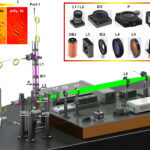In the realm of healthcare, understanding and addressing allergies is paramount to ensure patient safety and well-being. One common allergy that requires careful consideration is related to penicillin, a widely used antibiotic. The importance of a penicillin allergy test cannot be overstated, as it not only aids in accurate medical treatment but also plays a crucial role in preventing unnecessary complications. Let’s delve into the intricacies of penicillin allergies and why undergoing such a test is a wise health choice.
The Pervasive Use of Penicillin
Penicillin and its derivatives have been a cornerstone of antibiotic therapy for decades, effectively treating a broad spectrum of bacterial infections. From respiratory tract infections to skin conditions, penicillin has proven its efficacy in combating various ailments. However, its pervasive use has also led to an increase in reported allergic reactions, making it imperative for individuals to be aware of their allergy status.
Unmasking Penicillin Allergies
Allergic reactions to penicillin can range from mild to severe, with symptoms like skin rashes, itching, and swelling being common. In more severe cases, individuals may experience difficulty breathing, chest tightness, or even anaphylaxis, a life-threatening reaction that requires immediate medical attention.
Identifying a penicillin allergy is not always straightforward. Some reactions may be mistaken for other conditions, leading to the inappropriate avoidance of this crucial antibiotic when needed. This is where a penicillin allergy test comes into play.
The Significance of Penicillin Allergy Tests
1. Accurate Diagnosis
A penicillin allergy test is a diagnostic tool that helps healthcare professionals accurately determine whether an individual is allergic to penicillin. This is particularly crucial as many individuals may self-report allergies based on previous experiences or hearsay, leading to unnecessary avoidance of this class of antibiotics.
2. Avoiding Unnecessary Antibiotic Avoidance
A misdiagnosed penicillin allergy can result in the avoidance of penicillin and its derivatives, leading to the use of alternative, and sometimes less effective, antibiotics. This not only affects the individual’s treatment but also contributes to the growing problem of antibiotic resistance.
3. Preventing Adverse Reactions
For individuals with a confirmed penicillin allergy, knowing this information is vital to prevent adverse reactions. A healthcare professional can prescribe alternative antibiotics that are safe and effective for the individual, ensuring proper treatment without compromising their health.
4. Facilitating Informed Medical Decisions
Understanding one’s penicillin allergy status enables healthcare providers to make informed decisions about the most suitable antibiotics for a particular condition. This tailored approach to treatment enhances the effectiveness of medical interventions while mitigating the risk of adverse reactions.
5. Reducing Healthcare Costs
Unnecessary avoidance of penicillin due to a self-reported but unconfirmed allergy can lead to increased healthcare costs. This is because alternative antibiotics may be more expensive, and the length of treatment may be prolonged. A penicillin allergy test helps in the accurate diagnosis, leading to more cost-effective healthcare.
Types of Penicillin Allergy Tests
1. Skin Prick Test
The skin prick test involves applying a small amount of penicillin to the skin and then pricking the area with a needle. The skin’s reaction is observed, and if there is no significant response, it indicates a lower likelihood of a penicillin allergy.
2. Intradermal Test
Intradermal testing involves injecting a small amount of penicillin under the skin to observe the body’s reaction. This test is more sensitive than the skin prick test and is often used when the skin prick test results are inconclusive.
3. Blood Tests
Blood tests, such as the IgE blood test, measure the levels of specific antibodies produced in response to penicillin. While these tests are less sensitive than skin tests, they are useful in cases where skin testing is not feasible or advisable.
Overcoming Common Misconceptions
1. Past Tolerance Doesn’t Guarantee Future Tolerance
Some individuals may have taken penicillin in the past without any adverse reactions and assume they are not allergic. However, allergies can develop over time, and a previous tolerance does not guarantee future tolerance. These tests provide an accurate and up-to-date assessment of an individual’s allergy status.
2. Not All Reactions Are Allergic
Certain side effects of penicillin, such as upset stomach or diarrhea, are not necessarily indicative of an allergy. These reactions are common and may not warrant the avoidance of penicillin in the future. This test helps differentiate between true allergies and other adverse reactions.
Conclusion
In conclusion, the importance of a penicillin allergy test cannot be overstated in the realm of healthcare. Accurate diagnosis is crucial for avoiding unnecessary antibiotic avoidance, preventing adverse reactions, and facilitating informed medical decisions. With various testing methods available, individuals can work with their healthcare providers to determine their penicillin allergy status and ensure the most effective and safe treatment options are employed.











